Automotive technology has come a long way, and with it, the complexity of vehicle systems. Gone are the days of simple mechanical fixes; today’s cars are packed with electronics and sensors that require specialized tools for accurate diagnosis. That’s where Scan Tool Diagnosis comes in, offering a window into your car’s computer system to pinpoint issues effectively.
Understanding Scan Tool Diagnosis
At its core, scan tool diagnosis involves using a specialized device, a scan tool, to communicate with your car’s onboard computer system. This system, known as the Engine Control Unit (ECU) or Powertrain Control Module (PCM), constantly monitors various sensors and actuators responsible for your vehicle’s performance.
When a problem arises, the ECU stores a diagnostic trouble code (DTC), essentially a coded message indicating the nature of the issue. A scan tool retrieves these codes, providing valuable insight into what’s going wrong with your car.
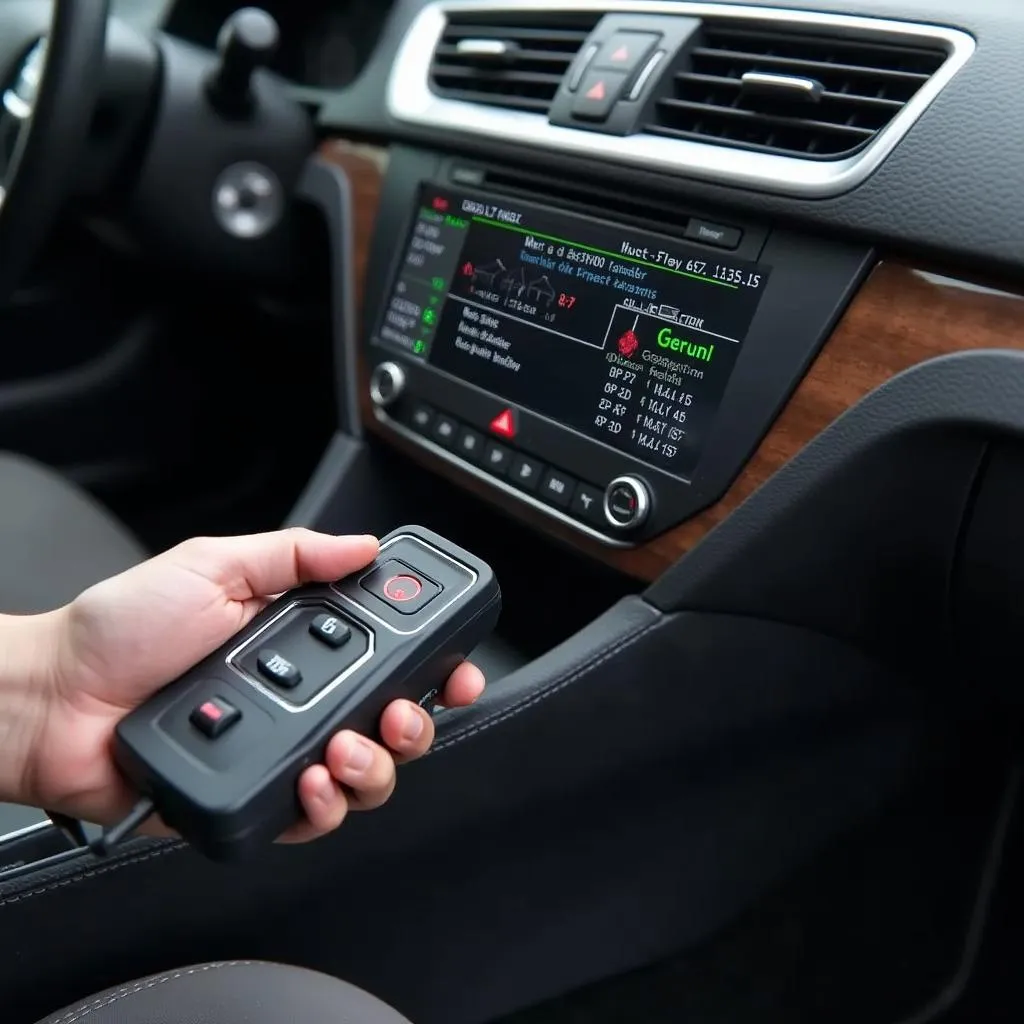 Car with Scan Tool Connected to OBD-II Port
Car with Scan Tool Connected to OBD-II Port
Benefits of Using Scan Tools for Car Diagnostics
While traditional troubleshooting methods involve visual inspections and manual checks, scan tool diagnosis offers a more precise and efficient approach. Here’s why:
- Accurate Pinpointing of Problems: Scan tools eliminate the guesswork often associated with diagnosing car problems. By retrieving DTCs directly from the ECU, you get a clear picture of the affected system, making repairs more focused and effective.
- Early Detection of Issues: Often, a scan tool can detect problems before they manifest as noticeable symptoms. This early detection can prevent minor issues from escalating into major (and costly) repairs down the line.
- Access to Comprehensive Data: Beyond DTCs, modern scan tools provide a wealth of data about your car’s performance, including live sensor readings, historical data logs, and even manufacturer-specific information. This comprehensive view allows for a deeper understanding of your car’s health.
Types of Scan Tools
The market offers a wide array of scan tools, each with varying capabilities and price points.
- Basic Code Readers: As the name suggests, these entry-level devices primarily retrieve and clear basic DTCs. They are a budget-friendly option for DIY enthusiasts looking to diagnose simple issues.
- OBD-II Scanners: Building upon basic code readers, OBD-II scanners offer more advanced features like live data streaming, freeze frame data (a snapshot of the vehicle’s status at the time a fault code was stored), and some bi-directional control capabilities (allowing you to command certain vehicle components to activate).
- Professional-Grade Scan Tools: These high-end devices are the go-to for experienced mechanics and dealerships. They boast comprehensive functionalities, including advanced coding and programming, access to manufacturer-specific data, and bi-directional control over a wide range of vehicle systems. You can learn more about a specific tool, such as how to use a laptop to scan with a Detroit diagnostic tool.
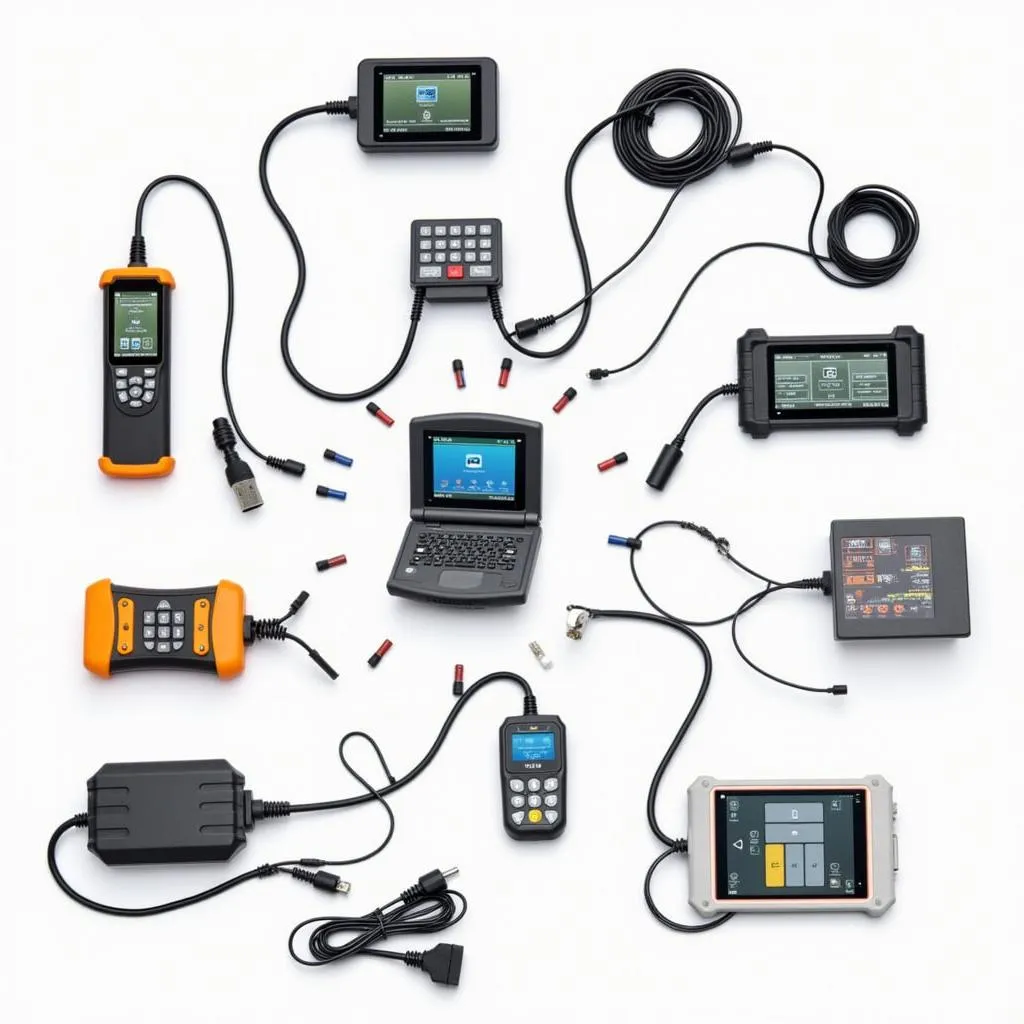 Various Automotive Scan Tools
Various Automotive Scan Tools
How to Use a Scan Tool for Diagnosis
Using a scan tool for basic diagnostics is generally straightforward, even for those new to car repair.
- Locate the OBD-II Port: In most vehicles manufactured after 1996, the OBD-II port is located under the dashboard on the driver’s side.
- Connect the Scan Tool: Plug the scan tool into the OBD-II port.
- Turn the Ignition On: Turn the ignition key to the “on” position, but don’t start the engine.
- Retrieve DTCs: Follow the scan tool’s instructions to retrieve the stored DTCs.
- Interpret the Codes: Once retrieved, note down the codes and consult a reliable source, such as a repair manual or an online database, to understand their meaning.
- Diagnose and Repair: Based on the code interpretation and further inspection, diagnose the root cause of the problem and perform the necessary repairs.
Remember: While scan tools are powerful tools for diagnosis, they don’t provide a magic bullet solution. They point you in the right direction, but a thorough understanding of automotive systems and proper diagnostic procedures are crucial for accurate repairs. For example, you might need a specialized ESP BAS scan tool for certain issues.
Common Mistakes to Avoid
- Ignoring Other Diagnostic Steps: Don’t rely solely on the scan tool. Visual inspections, component testing, and other diagnostic procedures remain essential.
- Jumping to Conclusions: A DTC provides a starting point, not a definitive answer. Investigate thoroughly before replacing any parts.
- Using an Inappropriate Scan Tool: Ensure the scan tool you’re using is compatible with your vehicle make and model.
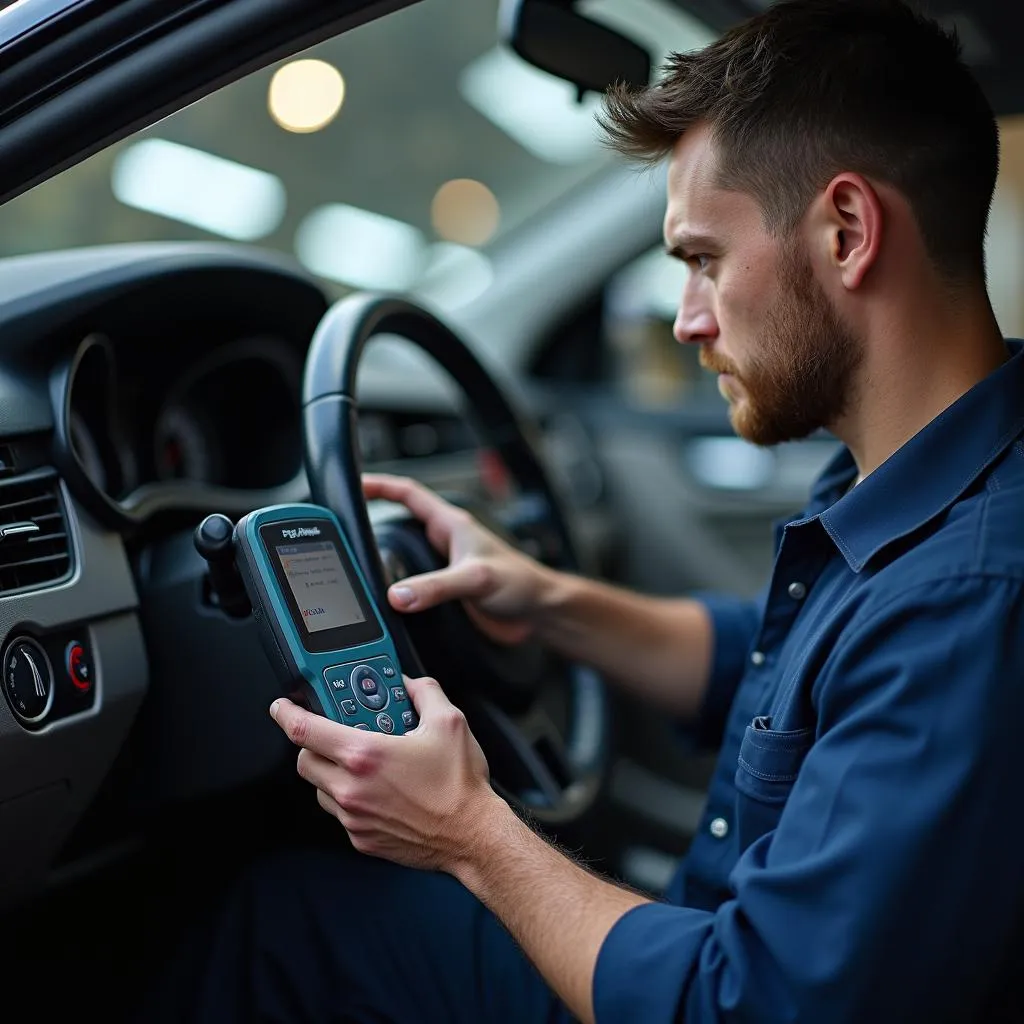 Mechanic Diagnosing Car Issue with Scan Tool
Mechanic Diagnosing Car Issue with Scan Tool
Expert Insight
“Many car owners underestimate the power of a good scan tool,” says John Smith, a seasoned automotive technician with over 20 years of experience. “It’s like having an X-ray vision into your car’s inner workings, allowing you to understand and address issues more efficiently.” He adds, “However, it’s crucial to remember that a scan tool is only as good as its user. Proper interpretation of data and sound mechanical knowledge are key to successful repairs.”
Scan Tool Diagnosis: A Worthwhile Investment
In an era of increasingly sophisticated vehicles, scan tool diagnosis has become indispensable for car owners and mechanics alike. Investing in the right scan tool empowers you to take control of your car’s maintenance, saving you time, money, and potential headaches down the road. Whether you’re a DIY enthusiast or a professional mechanic, a reliable scan tool is an essential tool to have in your automotive arsenal. If you are looking for an iPhone scan tool, you can find several options on the market.
Need expert assistance with your car troubles? Contact ScanToolUS today at +1 (641) 206-8880 or visit our office located at 1615 S Laramie Ave, Cicero, IL 60804, USA. We’re here to help you get back on the road with confidence.
FAQs about Scan Tool Diagnosis
1. Can I use any scan tool for my car?
Not necessarily. Ensure the scan tool is compatible with your vehicle’s make, model, and year. Some scan tools are specialized for certain vehicle brands or systems.
2. Will a scan tool fix my car problems?
No, a scan tool primarily diagnoses problems. It helps identify the issue, but you’ll need to perform the actual repairs.
3. What does a “check engine” light indicate?
A “check engine” light can signal a range of issues, from minor sensor malfunctions to serious engine problems. Using a scan tool to retrieve the associated DTC is crucial for diagnosis.
4. Can I clear DTCs myself?
Yes, most scan tools allow you to clear DTCs. However, it’s crucial to address the underlying issue before clearing codes, as it could mask a potentially serious problem.
5. Should I buy a basic code reader or a more advanced scan tool?
The best choice depends on your needs and budget. Basic code readers are suitable for DIY enthusiasts dealing with simple issues. For more advanced diagnostics or professional use, consider an OBD-II scanner or a professional-grade scan tool.
6. What if I can’t figure out the problem even with a scan tool?
If you encounter difficulties, it’s best to consult a qualified mechanic. They possess the expertise and experience to diagnose and repair complex automotive issues effectively. You can also use a car scanner for misfires and other specific issues.
7. Where can I learn more about using scan tools for car diagnostics?
Numerous resources are available online and offline, including automotive forums, repair manuals, and specialized training courses.

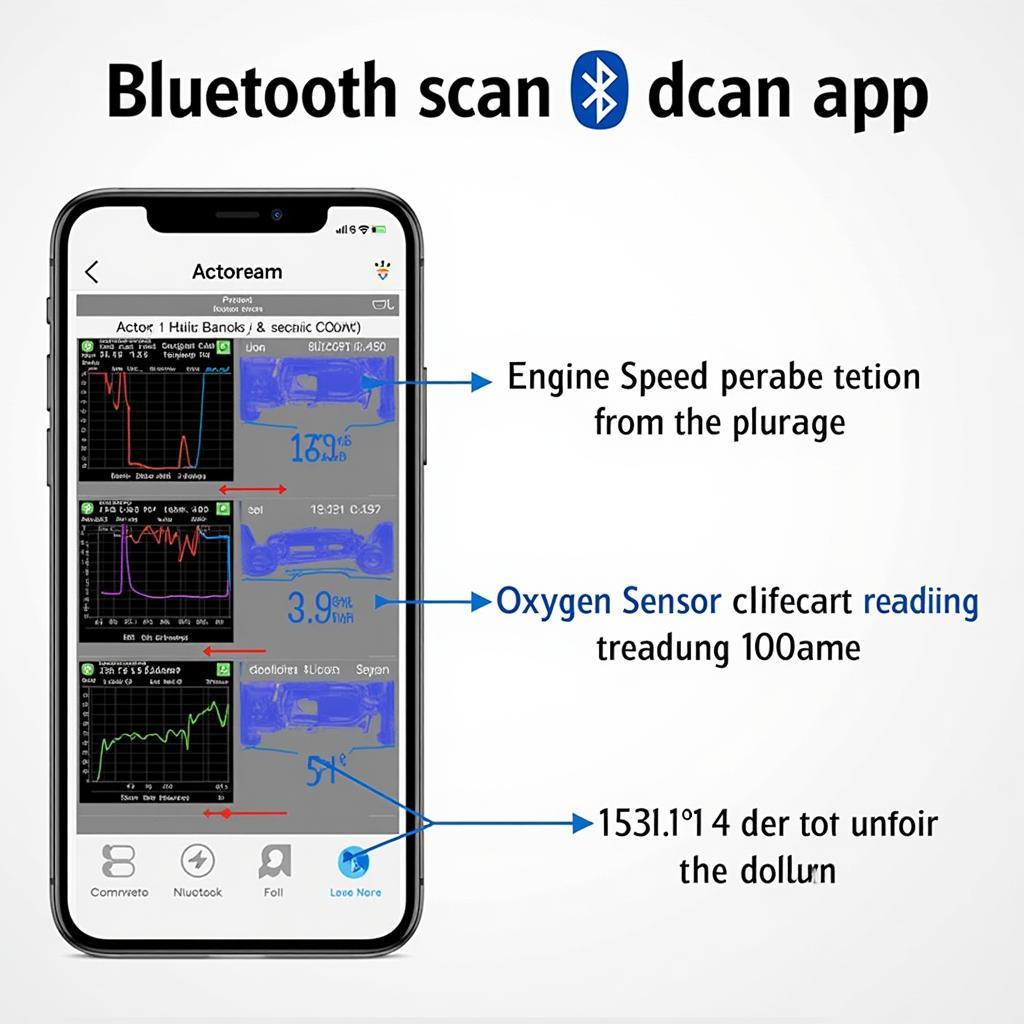
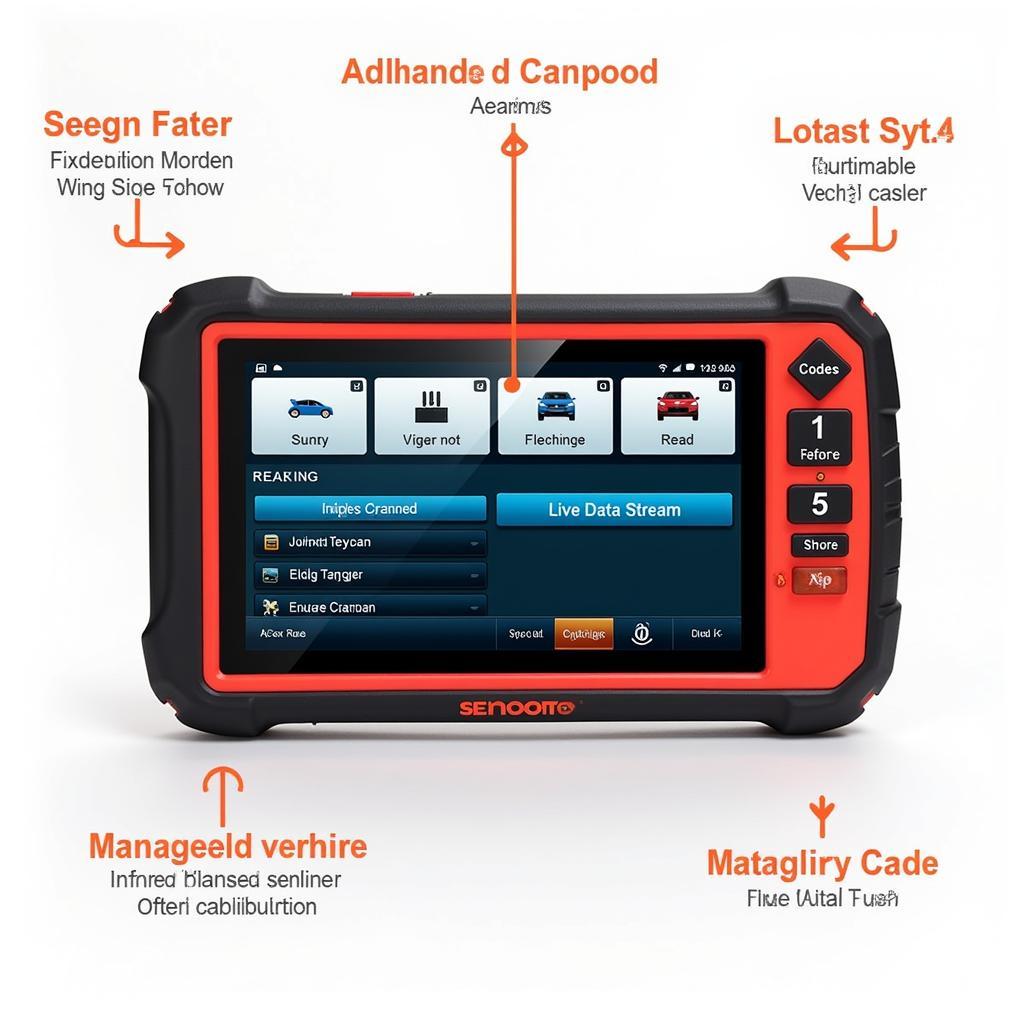

Pingback: Mastering Car Diagnostics: A Deep Dive into Diagnostics Scan Tools - Car Scan Tool